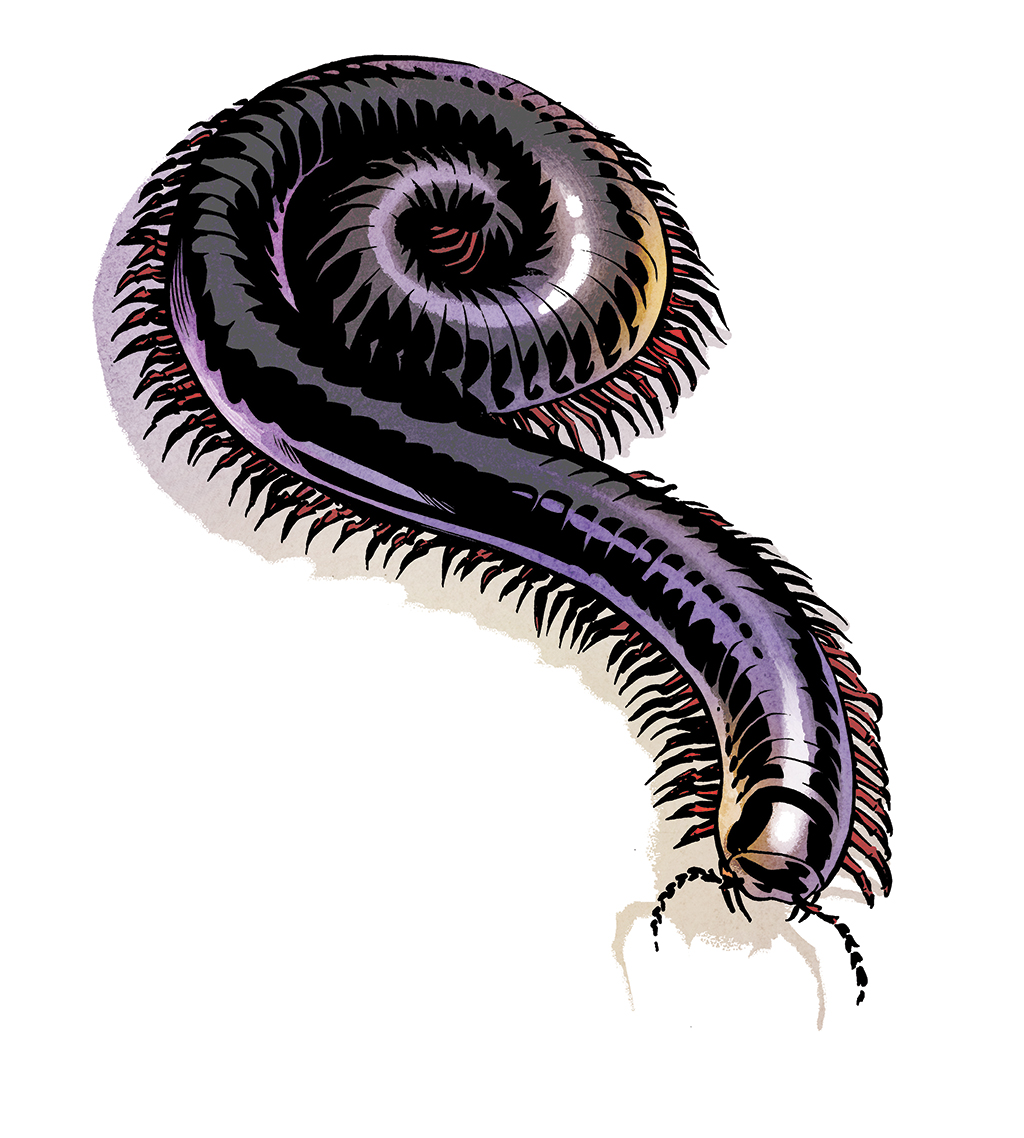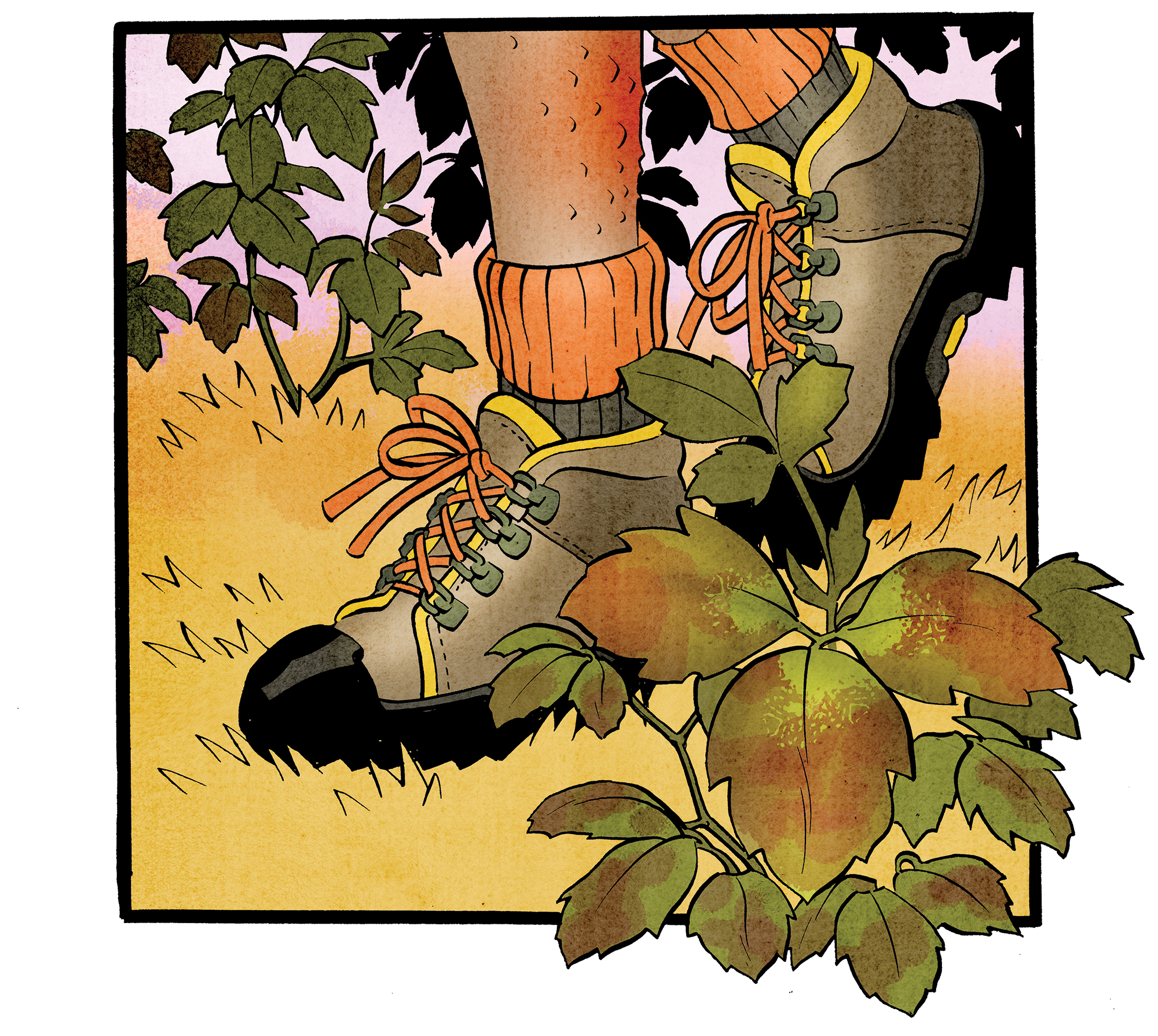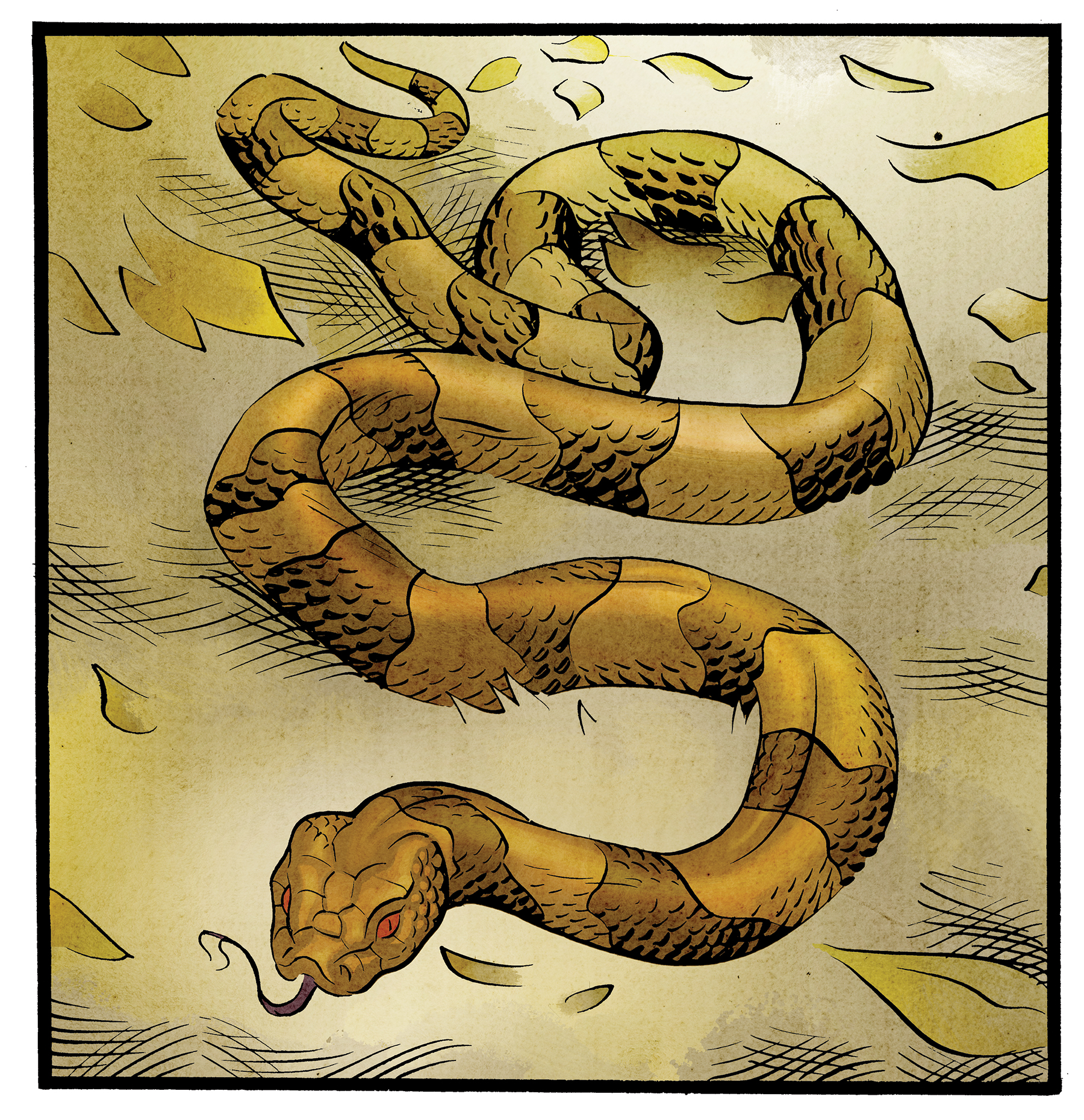
It's called nyctophobia — the fear of the dark. But it's not the dark itself that scares us. It's what may be lurking there. Could it be wolves? A bear? Has the hook-handed man from the campfire story come to attack us?
We don't seem to fear much when we spend the night indoors, with the doors locked and the night-light on. But the thought of sleeping outside can unlock primal fears that might keep us from enjoying a night under the stars. Don't let an overactive imagination keep you from the highly enjoyable, non-scary world of tent camping.
By Wendel Withrow
Illustrations by Ted Naifeh
We’ve all been first-timers, and likely we’ve all been teased for being afraid of things that go bump in the night, especially when they turn out to be nothing more than an owl or hungry raccoon. Getting close to nature can feel scary when you’re used to climate-controlled comfort in your own bed. Remember, you can’t get close to nature from those safe-feeling spots. Maybe it’s time to face those fears and give camping a try.
One of the best ways to get close to nature is by staying in a tent, which is how 60 percent of U.S. campers spent their nights outdoors in 2018, according to the North American Camping Report. But the report also notes that first-time campers are much less likely to stay in tents, with nearly 60 percent choosing instead to stay in cabins, RVs and other accommodations.
In his 2005 book Last Child in the Woods, Richard Louv describes the rise of nature phobia. Today’s parents keep children indoors to keep them “safe,” though their fears are based on dirt, plants, insects and wildlife rather than crime or other urban problems. Today, health officials tell us that it’s to our benefit to reconnect with nature and spend time outdoors, no matter the age.
Let’s get a reality check on some common concerns that intimidate people from camping. First, though, maybe it’s time to wander over and check out what you’re missing.
As you enter a Texas state park, find the park map to locate tent-camping areas. Even if you’re not camping on this trip, drive (or better yet, walk) through enticing tent-only areas like those at Enchanted Rock State Natural Area or Meridian State Park's Cottonwood Cove. Smell the campfire smoke, gaze up at the shady canopy of towering trees and meet the friendly, relaxed campers — you’ll find inspiration for the first step toward becoming an up-close-and-personal nature lover, not merely a spectator.
WILDERNESS TENDERFOOT
Everybody’s a new camper at some point, and it’s scary but also exhilarating. I remember my first campout very well. We were a rag-tag group of students, all innocents who signed up for a beginner’s camping trip to the Hill Country to experience what we thought of as utterly untamed wilderness, Pedernales Falls State Park, west of Austin. We purchased or borrowed enough equipment for a weeklong trek, including very heavy high-top leather boots suitable only for looking like a real hiker, but not for real hiking.
The first day went well. No campers were lost on the well-marked trail. Hungry and tired from the hike, we scarfed down some food and erected our low-tech tents with the help of step-by-step instructions and a simple diagram. Then, it was time to turn in to get some richly deserved rest after such a monumental wilderness experience.
As you would expect, sleep came fast and deep. But it did not last. The blood-curdling scream was very loud and very close. We all froze in our tents. Then another round of spooky howling. We tenderfoots all assumed it was the end of us — our first camping trip would be our last.
When we returned to our senses, we determined it was only an animal sound, not one of our fellow campers getting skewered. We gathered in the dark, fumbling for our Army-surplus flashlights, while our fearless trip leaders calmly explained it was probably mountain lions near our camp, looking for food.
We had just managed to get back to sleep when the next savage sound jolted all of us wide awake again. With palpable fear, we turned the lights toward the direction of the marauders and saw a reflection of eyes — did they belong to a big cat? — looking directly at us. The shadowy figures moved slowly and fought over something we guessed was a dead deer. On closer scrutiny, with more light, we discovered our marauders were actually huge raccoons quarreling over some leftover food trash carelessly left unsecured. We all shared a good laugh at our first and last night as wilderness tenderfoots.

SLEEPING ON THE GROUND
Now, why would sane travelers choose a tent, a sleeping bag and a patch of dirt over the comfort of the local motel, hotel or bed-and-breakfast? For the sunset, the stars and the sunrise! For the thrill of cooking over a campfire or listening to the water flow by.
You don’t have to wake up in agony every morning. The solution to this back-breaking problem is to invest in the thickest ground pads you can find. Don’t be fooled by the cheap promise of a kid’s air mattress. They always leak a little (or a lot) and you might need to use some lung power in the middle of the night to cushion that one rock that’s always somewhere under your sleeping bag. Bring a good pillow and a comfortable sleeping bag, and you might find it quite enjoyable to sleep on the ground.
REAL BUZZ ABOUT BUGS
The fine students at the University of Texas at Tyler chatted with me to broaden my understanding of their camping fears.
“Mosquitoes are annoying,” journalism student Chelsea Del Viscio told me. “Spiders are terrifying. Being scared of a creepy crawler is a legitimate reason to be scared of tent camping.”
I can understand that. Most of us are not too happy when the bugs outnumber the stars. The overnight sleeping solution is really simple. Almost every modern tent has a net system to keep out even the tiniest ant or spider. The key to bug-free slumber is to keep those zippers closed until you are ready for a quick entrance, then secure yourself for the night.

STRANGER DANGER
Security is also on many people’s minds these days. A glance at newspaper or television headlines could make you fearful of camping, where you may encounter some strangers. Texas state parks are patrolled by park rangers; some parks have access gates that are closed at night. You are in far greater danger on the urban freeways than amid the peace and serenity of a secluded campground.
You may experience a different kind of trouble if you show up at midnight in a campground full of slumbering tent campers and begin a setup as noisy as the state fair midway. (I also can’t guarantee you won’t be sent to remote sites if you snore like a chainsaw.)
WATCH THAT VINE
Texas boasts a multitude of plant species. You can enjoy observing everything from the softest fern to the prickliest cactus, but the fun stops when you tangle with poison ivy, poison oak, poison sumac or cactus spines. As a tent camper, you need to educate yourself about these plants so you can steer clear. Luckily, most numbered campsites in Texas state parks are free of harmful vegetation, but a nighttime foray into the woods in shorts should be done carefully and with a flashlight. Better to stay on a clear path when you toddle off to the restrooms.

LIONS AND TIGERS AND BEARS
As a new tent camper in Texas, you may have nightmares about wild beasts arriving for a nocturnal visit. While we don’t have any tigers in Texas, some remote areas do have mountain lions and black bears. Remember, we are visitors to their home, so be sure to practice proper procedures on the trail and at your campsite.
Never leave food, unwashed pans or trash out on your table. Always secure food in the trunk of your vehicle (or a metal “bear box” if available). Most importantly, do not bring food or other aromatic items into your tent or you might be sharing those munchies with an unwelcome guest.
As a final caveat, ask the park rangers about any special wildlife of concern, like the large (and occasionally feisty) free-roaming bison at Caprock Canyons State Park or the 9-foot alligators at Brazos Bend State Park.
JUST SOUNDS NASTY
Many newcomers to the Texas outdoors have questions about snakes. Texas does have a nice variety of venomous snakes: coral snakes, copperheads, water moccasins and nine different kinds of rattlesnakes. Be sure to pay attention to any warning signs or ranger instructions. If you see a snake, leave it alone. Snakes are protected wildlife in the park, so attempts to harass or harm them often end badly. Just watch where you put your feet and hands, and you will be safe.

RAIN ON YOUR PARADE
What if the weather doesn’t cooperate? Texas’ size guarantees a wide range of weather conditions, from searing heat to sudden snowstorms. Good news! A quality tent will have a rain-fly system that should keep you dry in the heaviest rainstorm (as long as you remembered to put it on before turning in). Enjoy that beautiful sunset, but keep a close eye on those towering cloud formations heading in your direction.
The real dangers to tent campers occur when they try to traverse flooded low-water crossings.
While your marked campsite is generally above flood level, the roads in and out of your campground can become raging rivers. Watch for those low-water crossing signs; never drive into a flooded area. Pick the highest ground you can find and wait for the flood to dissipate; you’ll be given the all-clear sign from your local rangers. Some parks have warning sirens, or rangers may come by to warn you to pack up and get out. Always follow their instructions.
The most frequent weather danger in Texas is the heat. Don’t be fooled by that cool morning air when you are heading out on the trail. Bring at least two quart/liter bottles of water in your pack and wear a wide-brimmed hat. Plan your hiking or other outdoor activities for early morning or evening.
DISCONNECTION DETOX
The really good news is that your chances of having a Wi-Fi connection or even cellphone service are not very good. Wait, that’s good news? Yes! The true reward of tent camping is to get away from your electronic devices and interact with nature and, most importantly, the friends and family you brought along or the new friends you hope to meet. Leave Google at home.
Wendel Withrow is the author of "Best Tent Camping: Texas," published by Menasha Ridge Press.
Related stories
» Like this story? If you enjoy reading articles like this, subscribe to Texas Parks & Wildlife magazine.

